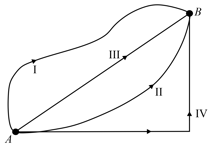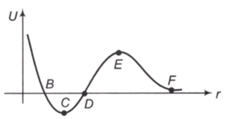Conservative and Non-conservative Forces
Conservative and Non-conservative Forces: Overview
This topic covers concepts, such as Conservative and Non-conservative Forces, Equilibrium of Bodies, Stable Equilibrium, Unstable Equilibrium, Neutral Equilibrium, Force and Potential Energy & Graph of Potential Energy etc.
Important Questions on Conservative and Non-conservative Forces
The potential energy of a particle as function of position is given by, where is in metre. The equilibrium position of the particle will be
A body of mass is suspended from massless spring of natural length . If mass is released from rest, spring can stretch up to a vertical distance of , the potential energy stored in the spring at this extension is ()
When a spring is stretched by , the energy stored is . If it is stretched further by , its energy increases by _____.
Which of the following is non-conservative force?
A particle of mass has potential energy . Then its angular frequency for small oscillation about its equilibrium position will be,
Which one of the following is not a conservative force?
Which of the following forces is not conservative?
The of a particle of mass moving along the - axis is given by, , where is in . It can be concluded that the wrong option is
In a gravitational force field a particle is taken from to along different paths as shown in figure. Then

Assertion: Friction is a conservative force.
Reason: Friction does not depend upon mass of the body.
Frictional force is_______________.
Which of the following statement is not true?
The potential energy of a system increases if work is done
Which of the following is true for an Unstable equilibrium ?
The potential energy of a particle under a conservative force is given by . The equilibrium position of the particle is at:
If the potential energy for the force between two atoms in a diatomic molecule is given by , given and are constants atomic distance, What is the value of if the dissociation energy of the molecule is ?
Example of a non-conservative force is:
When a block moves with some friction on ground,
The given plot shows the variation of , the potential energy of interaction between two particles with the distance separating them .
1. and are equilibrium points
2. is a point of stable equilibrium
3. The force of interaction between the two particles is attractive between points and and repulsive between and
4. The force of interaction between particles is repulsive between points and .
Which of the above statements is correct?
Select the correct Potential energy() vs inter-atomic distance() for a stable molecules found in nature.

